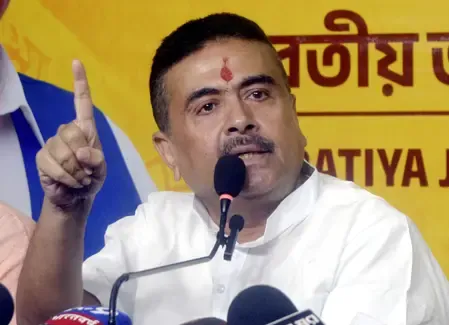Is the Andhra Pradesh government really forming three new districts?

Synopsis
Key Takeaways
- The Andhra Pradesh government is creating three new districts.
- The total number of districts will increase to 29.
- Chief Minister Naidu is focused on administrative efficiency.
- The reorganization seeks to address past issues and regional disparities.
- A subcommittee was formed for effective district reorganization.
Amaravati, Nov 25 (NationPress) The government of Andhra Pradesh has made a significant move by creating three new districts, raising the total count of districts in the state to 29.
The Chief Minister, N Chandrababu Naidu, gave his approval on Tuesday to the suggestions made by the Group of Ministers, which include the new districts of Markapuram, Madanapalle, and Polavaram.
Additionally, the government has resolved to establish five new revenue divisions, namely Nakkapalli in Anakapalli district, Addanki in Prakasam district, Peeleru in Madanapalle, Banaganapalle in Nandyala district, and Madakasira in Satyasai district.
The meeting also sanctioned the creation of a new Peddaharivanam mandal by splitting Adoni mandal from Kurnool district.
Rampachodavaram and Chinturu revenue divisions will be part of the newly formed Polavaram district, with Rampachodavaram designated as its headquarters.
Markapuram district will include the revenue divisions of Yerragondapalem, Markapuram, Kanigiri, and Giddaluru.
The new Madanapalli district will comprise Madanapalli, Punganuru, and Peeleru revenue divisions.
Last month, the Chief Minister emphasized that the reorganization of districts should align with the aspirations of the people and enhance administrative efficiency.
He highlighted the necessity to address issues that arose from the previous government's formation of new districts, ensuring that new challenges do not emerge.
On July 22 this year, the state government established a seven-member ministerial subcommittee dedicated to district reorganization.
Post-bifurcation in 2014, Andhra Pradesh was left with merely 13 districts. The former YSRCP government increased this number to 26 by 2022.
The TDP coalition had committed during last year’s elections to reform the districts and create new revenue divisions to rectify the unscientific arrangement of districts by the previous government.
CM Naidu remarked that the previous government's misguided decisions on district formations led to regional disparities by not considering the public's aspirations.
He tasked the subcommittee with the reorganization of districts while considering the delimitation of constituencies, suggesting that the reorganization of revenue divisions should be handled separately.
Naidu requested a thorough analysis of which revenue ward and constituency the residents of the flooded mandals would belong to once the Polavaram project is completed, insisting that the reorganization should reflect this.









